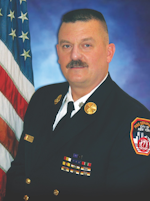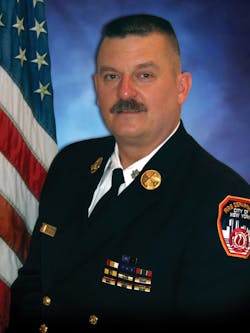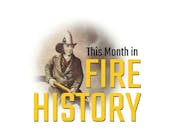It’s that time of year again when the numbers of firefighters who were injured and killed in the line of duty are totaled, analyzed and discussed. I always disliked this gruesome ritual for a number of reasons.
My first problem with the reporting of national firefighter line-of-duty deaths (LODDs) is that there isn’t a single number. In fact, there are two numbers. Two separate national fire service organizations often come up with a different total number of firefighters who lost their life serving their communities. How is that possible? One organization determines the number of LODDs, and the other compiles statistics of on-duty deaths, with each having different criteria for what an LODD is. The details aren’t as important, but the process is flawed in my eyes.
The numbers are published for a good reason: to keep us all aware of the number of firefighters who are killed doing the work that we do. We total these numbers and publish them to promote firefighter safety and survival and to keep us all informed of trends, but we can’t even peg a single number to zero in on. Why is there such a difference?
There’s a difference
The second and more important issue that I have with the national firefighter LODD numbers is that the numbers distract us from the real truth, which is that there aren’t many firefighters who die actually in the line of duty. There is a distinction here that few people or organizations want to discuss. What actually is an LODD?
We all read the headlines and stories about firefighters who die all across the country. To be clear, every firefighter who dies performing any kind of duty deserves recognition, and his/her family should receive whatever death benefits that apply to the specific situation. Firefighters die from cancer and other medical conditions that have been deemed job-related. Firefighters die while they conduct routine maintenance work and training activities. Firefighters die in nonemergency vehicle accidents while they conduct business for their department. They all are entitled to the recognition and respect of their communities and of their department, but why are these losses viewed the same as the firefighter death that occurs in the collapse of a burning building while a rescue of a trapped civilian is attempted?
If you look at the past year of LODD numbers, you’ll see that the number of firefighters who were killed while actually operating at fires and at other emergency scenes is quite low. (Some years, the number is the single digits or low teens.) We should more accurately categorize and identify actual killed-in-action numbers, training numbers and administrative numbers separately.
Combining all of these dramatically different situations into a single number (which we can’t do anyway) doesn’t properly serve the memory of the involved firefighters who have sacrificed so much.
Another misconception that’s created by publishing “total” firefighters who are killed each year is that it creates a negative view of the issue. In actuality, most fire departments haven’t suffered an LODD during the previous year. Tens of thousands of fire departments haven’t experienced an LODD in their history. They are doing great! Their number is zero. That fact should be celebrated and totaled and published. Doing so wouldn’t in any way diminish the sacrifice that’s experienced by the departments where a firefighter was killed.
There are many departments out there that have strong and active administrations that promote health and safety within their department. There are many departments that have dozens of modern, written procedures and guidelines that are followed by their company officers and firefighters. Many departments promote quality training and fund it both within the department and by allowing members to attend local and national conferences on relevant topics.
National LODD numbers can be a tool to raise awareness. They can help us to take a critical look at our industry to see what changes might be required or indicated. However, the overall negative image that’s produced by the tracking of LODDs year after year has, I believe, little impact on the issue of firefighter LODDs. In fact, if the time and effort that’s used to collect and analyze this statistical information was instead used to recognize departments that have excellent health and safety records and share the steps they have done to prevent deaths or injuries, a better outcome might result.

John J. Salka Jr. | Battalion Chief
JOHN J. SALKA JR., who is a Firehouse contributing editor, retired as a battalion chief with FDNY, serving as commander of the 18th battalion in the Bronx. Salka has instructed at several FDNY training programs, including the department’s Probationary Firefighters School, Captains Management Program and Battalion Chiefs Command Course. He conducts training programs at national and local conferences and has been recognized for his firefighter survival course, “Get Out Alive.” Salka co-authored the FDNY Engine Company Operations manual and wrote the book "First In, Last Out–Leadership Lessons From the New York Fire Department." He also operates Fire Command Training, which is a New York-based fire service training and consulting firm.






